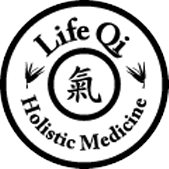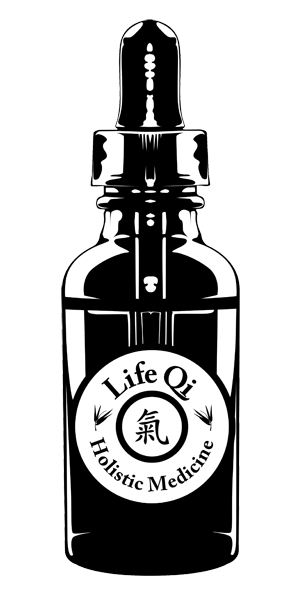How the Summer Solstice, the Heart and the Spirit are All Connected

Summer Solstice is now only one week away. This date marks the return of yin in Chinese medical theory. While in Western cultures and calendrical sciences the Summer Solstice is said to represent the start of summer, in Eastern cultures and ancient Chinese calendrical sciences it actually represents the MIDPOINT of summer. This is a hard concept for many Westerners to wrap their brain around, as it seems contradictory to what we were raised to believe. This article will attempt to help you make sense of how both are correct, and that it is simply a matter of perspective and understanding.
The best way to understand this seemingly contradictory information is to realize that the current worldview is that our weather and seasons are based more on the apparent PHYSICAL manifestations on Earth, whereas most ancient cultures viewed the weather and seasons based on the ENERGETIC changes taking place that might not be apparent yet to the naked eye. Chinese medicine views the spirit and energy of the body (the non-physical/invisible) to be of primary importance. Think of it in a linear or hierarchical model where shen (spirit) creates qi (energy) and qi becomes the basis for the xing (physcial/material body). In Chinese medicine, the shen is considered the most important and sacred aspect of the human. At all costs we must guard the shen with great care to preserve our health.
The Heart and blood is said to house the shen in Chinese theory. I said the shen is the most important part of our being, so it should come as no surprise that the Heart is also the most important organ network in Chinese medicine theory, just as it is in Western medical science. The Heart is considered the emperor of the organ systems in Chinese medicine, and once again, it is because the spirit resides within it, not because of its physical functions. So, here we see the parallel between the relationship of the East vs. West calendars playing out in the body itself. The Heart is the most important organs in both Eastern and Western medical thought, but in Eastern thought it is because of its associations with spirit (non-material) and in Western thought it is because of its ability to pump the blood (physical).
Let’s look at another association of the Heart from a Chinese medicine perspective to help you understand the energetic realms that pervade the Chinese way of thinking. In Chinese medical theory, each organ system is associated with a 2 hour period of the day. It is said that this is when the qi is strongest and most concentrated in that particular organ network. The time of day associated with the Heart is 11AM-1PM.

In most parts of the country, that time frame is considered the hottest part of the day (most yang). As yang reaches it terminus, that is when yin slowly begins to dominate again. So, if the hottest part of the day is somewhere near 12-1PM, why is the temperature still really hot for the next few hours? Because yin doesn’t just magically take over, but gradually the energy is shifting throughout the afternoon until at some point (on the physical/manifest plane) we can obviously say it is much cooler and darker (yin associations) out now than a few hours ago. The sun is starting to get closer to the horizon but yet it is still warm and sunny out for many hours later after 1PM. At some point in the evening the dark has taken over and we declare the sun has set, but don’t forget this process has been unfolding for many hours. We can’t really see the process happening with our eyes, we can only see the end result. So, at around 9PM we might say it is 15 degrees cooler out now and it is officially dark, but we can only say that because of the process that was unfolding all afternoon while it was still warm and sunny out.
If we were not aware and had no prior experience of this daily cycle, one might be surprised and confused as to why the sun was out one moment and then the next moment it disappeared and became dark out. The seasons work the same way. Because of our experiences with yearly cycles, we know roughly when the physical changes on Earth should take place based on the date and season. If we could “see” the energetic shifts happening underground and in the air, maybe then we could really predict the weather much more accurately in advance. In fact, their is a whole branch of Chinese medicine dedicated to understanding how the energetic shifts in the liuqi (6 atmospheric energy) affect our health and whole being. The liuqi are as follows: wind, cold, damp, heat, fire and dry. All of these elements and their balance/proportions, as well as arriving on time or late on earth, effect everything from the weather, to plants to human health. It is quite powerful information to have, yet few people in the world are well versed in this ancient knowledge!

Hexagram 44 Gou “Coming to Meet”
Here are some scholarly interpretations of this hexagram:
Richard Wilhelm: “This hexagram indicates a situation in which the principle of darkness, after having been eliminated, furtively and unexpectedly obtrudes again from within and below. Of its own accord the female principle comes to meet the male. It is an unfavorable and dangerous situation, and we must understand and promptly prevent the possible consequences. The hexagram is linked with the fifth month [June-July], because at the summer solstice the principle of darkness gradually becomes ascendant again.”
James Legge: “A single, magnetic line enters at the bottom of the hexagram. This is the figure used to represent the time of year when light and heat begin to wane. In the divided line we see the symbol of the inferior man, beginning to insinuate himself into the government of the country. His influence, if unchecked, would go on to grow and fill the vacant seats with others like himself. The objective of the Judgment is to arouse resistance to this evil influence.”

